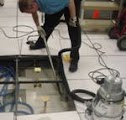New DRaaS Select Tier Delivers Efficient, Cost-effective and Cloud-native Disaster Recovery and Backup Solutions to Modernize IT Infrastructures

Datrium delivers the first server flash storage system with the Datrium DVX. Unlike rigid and expensive Arrays or Hyperconverged servers, DVX storage gets its speed from commodity, Bring Your Own (BYO) compute and SSDs on stateless servers, so storage for VMs is simpler to scale, more efficient, and more dynamic. The DVX will be ideal for enterprise applications, including VDI, test and development, and server VM consolidation.
SUNNYVALE, Calif., Feb. 5, 2020 /PRNewswire/ -- Datrium, pioneer of the secure multi-cloud data platform for the resilient enterprise, today announced that it has expanded the Datrium Global Partner Network to new regions and introduced a new tier, DRaaS Select. With DRaaS Select partners can better aid customers in their cloud transformation and modernize disaster recovery (DR) and backup processes.
"We've experienced high demand from customers looking to transform their data centers with more cloud-based solutions," said Tim Page, Chief Executive Officer at Datrium. "At Datrium, we pride ourselves on delivering unprecedented flexibility and simplicity to help customers transform their IT. The new and expanded partner program reflects our mission to bring on-demand, failproof and cost-effective DR with VMware Cloud on AWS to enterprises everywhere. This is an exciting time for Datrium and our growing Global Partner Network."
The new DRaaS Select tier provides partners with additional services opportunities and enables them to better guide their customers through DR transformation initiatives and protect them from the growing threat of ransomware. DRaaS Select partners receive the highest level of training and certification in DR with VMware Cloud on AWS so they are uniquely equipped to help organizations protect themselves from disasters in an economical way. Participation in the DRaaS Select tier is by invitation only and is limited to an exclusive set of highly skilled partners in specific geographic regions.
Datrium Partners Bring Cloud-native DR To More IT Organizations
DRaaS is fundamentally changing the DR market with its cloud-native design, built-in backup, instant Recovery Time Objective (RTO), continuous compliance and an on-demand pay-as-you-go model. This presents a unique opportunity to leverage the public cloud and its elastic capabilities to finally deliver DR done right with Datrium DRaaS with VMware Cloud on AWS. Datrium's commitment to the channel and its partners' go-to-market efforts are reflected in the following Partner Network levels:
- DRaaS Select resellers receive advanced training and certification on DRaaS with VMware Cloud on AWS. These partners have the highest level of expertise in DR with built-in backup. DRaaS Select partners can help customers transform their DR processes including providing guidance on Runbook creation and multi-cloud deployment strategies.
- Preferred resellers are provided with new service opportunities and a rich set of program benefits, so together with Datrium they can help companies achieve failproof on-demand DR, achieve their DR compliance objectives, quickly recover from ransomware attacks, modernize their data centers, achieve their hybrid cloud objectives, and design and implement data resilience strategies.
- Authorized resellers can provide services beyond DR, including all around data center modernization, multi-cloud and hybrid cloud strategies as well as data resilience efforts.
With the Datrium Automatrix, which contains DVX at its core, Datrium and its partners can remove IT infrastructure complexity by delivering a platform that converges backup, mobility, DR and encryption in a single platform.
Since releasing DRaaS to the market in August 2019, Datrium has expanded its DRaaS Select Partner ecosystem and garnered interest in DRaaS Preferred, adding new partnerships across the U.S., Europe, Australia, New Zealand, and the Philippines including ASI Solutions and BEarena NZ, Bytes Software, CDW, Champion Solutions Group, Citrus Solutions, DCNEXT Holland, Epaton, Mindsight, Novulutions, Prodec Networks,
PTS Data Center Solutions, SISL, Spinnakar, Technologent, and TrustCo.













































.jpg)
